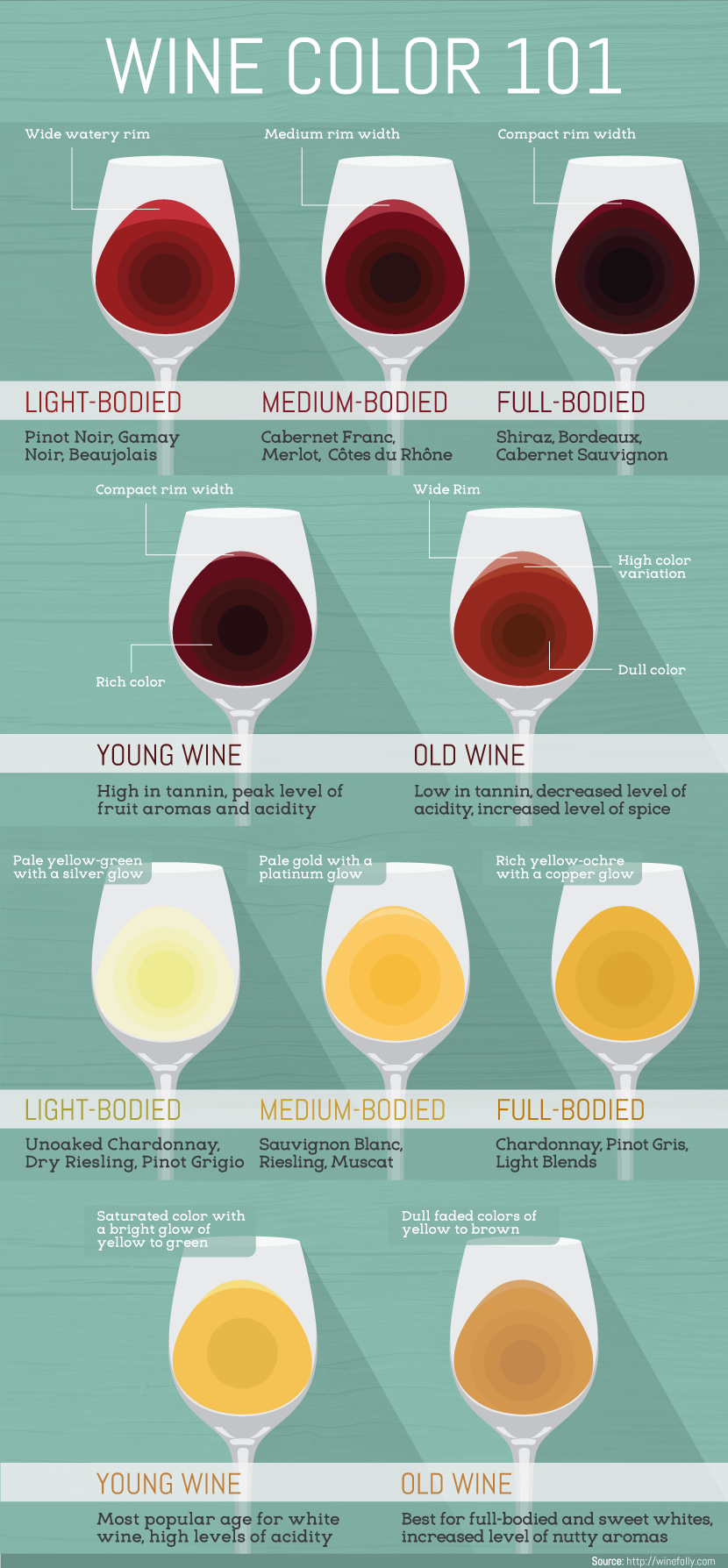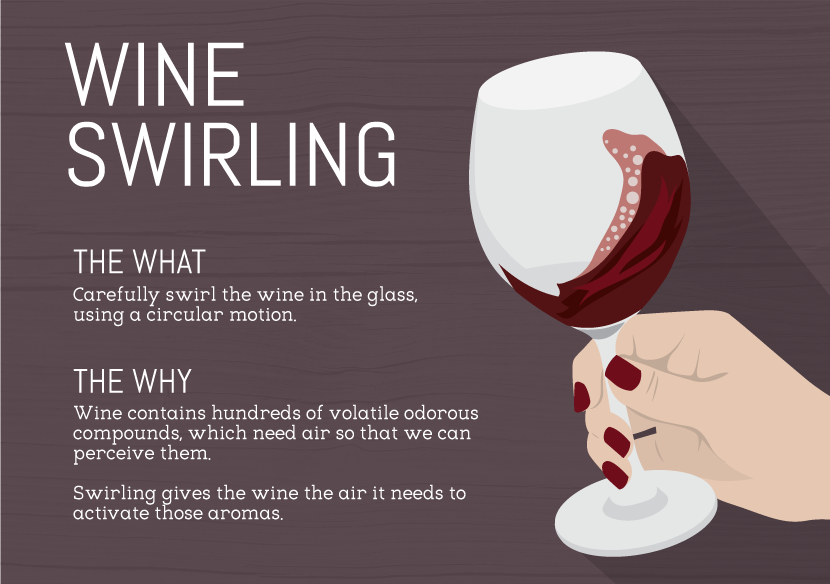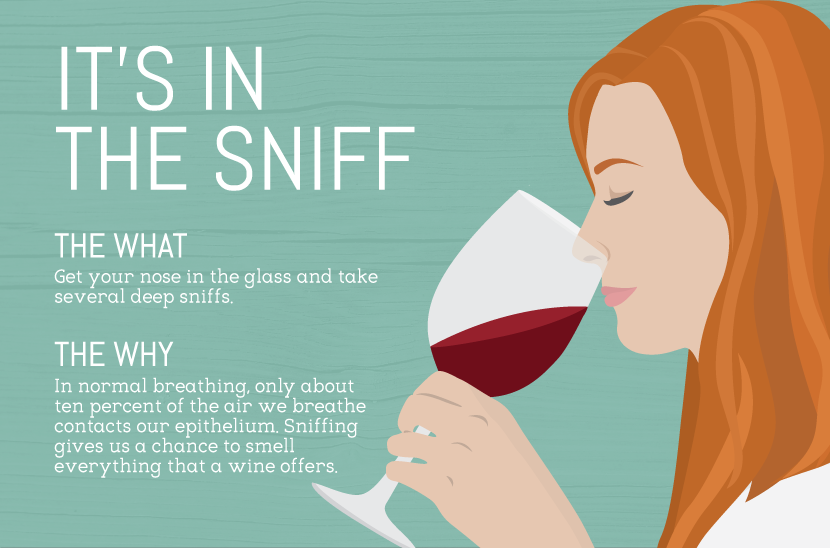Channel Your Inner Sommelier
Drink Wine Like a Pro
When embarking on the exciting journey of exploring the pleasures of fine wine,
it doesn't take long before you encounter the standard tasting order in
which wine is “supposed” to be drunk: look, swirl, sniff, sip (and spit).
Over time, these steps have become gospel, repeated over and over in
wine magazines, books, and websites.
To many people, this seems an overly complicated process. After all,
we already know how to drink, so what’s with all of the extra steps? Is
this legitimate, necessary stuff or just another example of snobbish bores
trying to turn wine’s simple pleasures into a tiresome rite of passage?
The truth is that these steps aren’t necessary for drinking fine wine,
but they are essential if you want to get the most pleasure possible out
of a glass of vino. What’s often missing from these list of steps is why
each one is important to wine appreciation. Here’s a deeper look at what’s
behind each of the steps and how you can perform them without triggering
the snob alarm to your friends.
Step One: Look
If you’re like most people, you only give a passing glance at the food and beverages that you consume.
When it comes to wine, however, not taking the time to observe it in the glass is denying yourself
one of the most underappreciated vinous pleasures. Fine wine often has a gorgeous color; you can encounter everything from light salmon to deep strawberry red, and that’s just for rosé wines!
A good look at a wine can also clue you into potential faults, such as premature aging
(if the color seems excessively brown for a young wine), or other issues (if the wine seems excessively cloudy).
Fortunately, these are relatively rare occurrences.
You needn't make a spectacle of this step. It only requires finding a decent source of
light, a relatively light background, and a few moments of your time. The colorful results
are usually worth the modest hassle.

Step Two: Swirl
It’s been estimated that fine wines contain about 200 odorous compounds,
making them one of the most complex beverages we ever imbibe. Those compounds
are primarily volatile, meaning that they require air for us to be able to
detect them. Swirling a wine in the glass exposes more of the wine’s surface
area to oxygen, helping to release those complex aromas. This step is
particularly important for young fine wines, which tend to develop slowly.
Think of swirling as giving the flavors a gentle nudge to open up a bit.
Fortunately for fine-wine lovers, swirling a glass of wine carries little stigma
now unless it’s performed with over-accentuated flourishes. This simple but
essential step can be performed quickly, using a circular motion, and it does
the wine a world of good. Just be sure that you don't try it with a glass that’s been
filled too high unless you plan on forking out for the dry cleaning bill
of whoever is standing close to you when you try it!

Step Three: Sniff
In terms of wine appreciation, sniffing is the single most important step in the tasting process.
Almost all the complexity that a wine delivers is aromatic, including most of its flavors
(which we experience retro-nasally when the wine is in our mouths). There’s solid reasoning –
both chemical and biological – behind this one, so if you’re going to focus on one step first,
make it this one!
For most people, short, deep sniffs will work best. What you’re doing with these
sniffs is trying to get as many of the wine’s aromatic compounds as you can to your
epithelium, a dime-sized olfactory organ that’s capable of detecting a huge array
of smells and is wired to the portions of your brain that are responsible for
emotional responses and memory. In normal breathing, only 10 percent of the
air we take in makes it to the epithelium, so focused sniffing is a must
if you want to pick up all of the aromatic subtleties of a good wine.

Step Four: Sip (and Spit)
Of course, the ultimate point of enjoying wine is to drink it.
However, there’s a bit more to wine appreciation than the pleasant
feelings imparted by its alcohol content. A wine’s volatile compounds
activate even more when exposed to the warmth in your mouth, releasing
flavors and further aromas. Getting the wine in contact with your gums
and tongue is the only way to experience its texture, from crisp and
vibrant to silky, tannic, and hefty. Finally, a wine’s finish (how long
its aspects linger after it’s been tasted) can only really be experienced
after it’s been in your mouth. Sip as much wine as you need to fully
appreciate it, but it’s best to avoid large gulps.
At this point, you'll have to decide what to do with that sip.
If you’ll be tasting many wines in a short period, such as at a large
tasting, you’ll need to make use of the spit buckets (don't fret too much
about technique; experienced testers know that there’s no totally graceful
way to do this). Remember that, even if you spit, you’ll still be
absorbing some alcohol with each taste, so plan accordingly.

The beauty of this method is that it works, and there are excellent reasons for
going through each step. The icing on the cake? You can use these steps to seriously
evaluate a wine or simply to increase the pleasure you’ll get from drinking your
next glass with dinner.
Embed the article on your site

